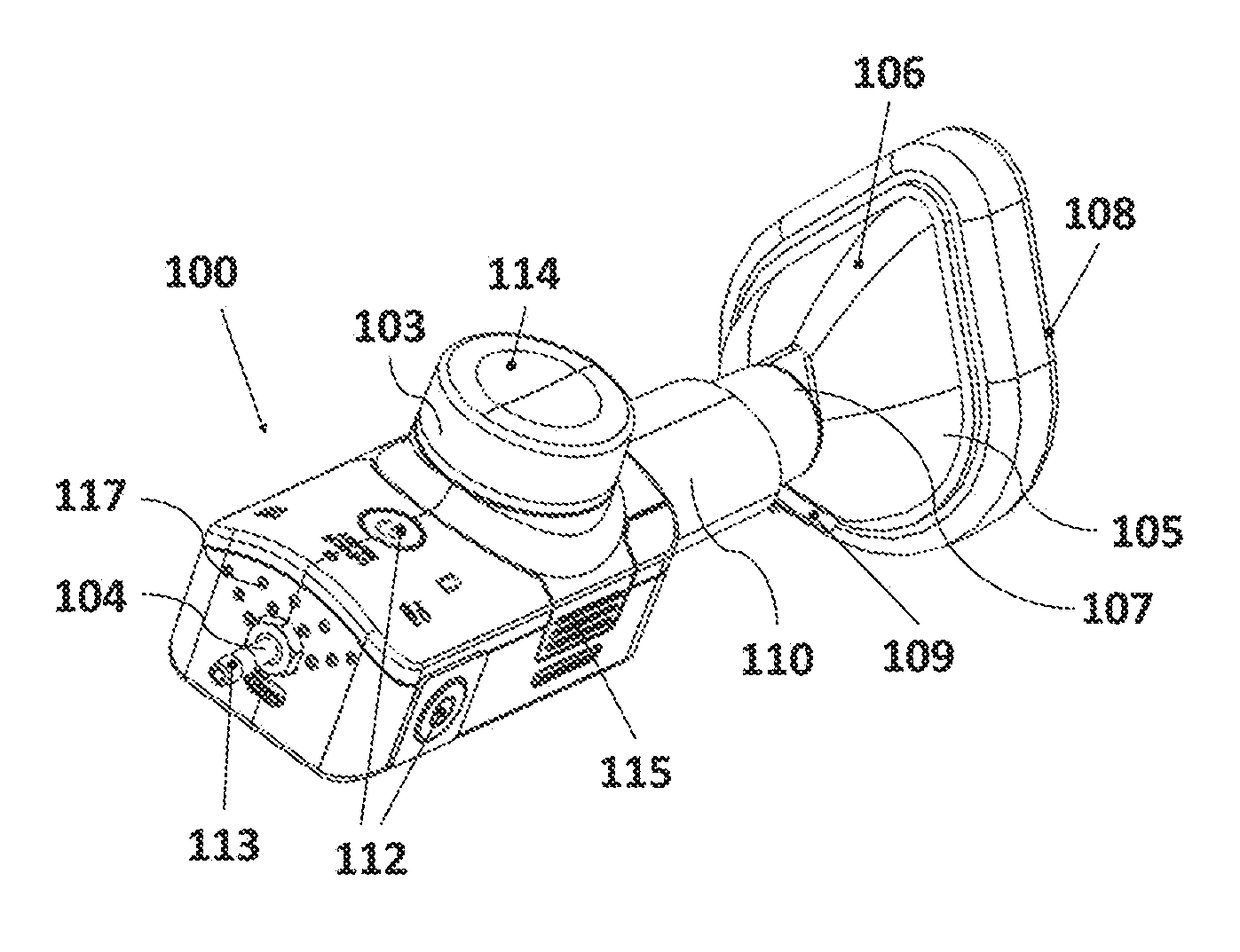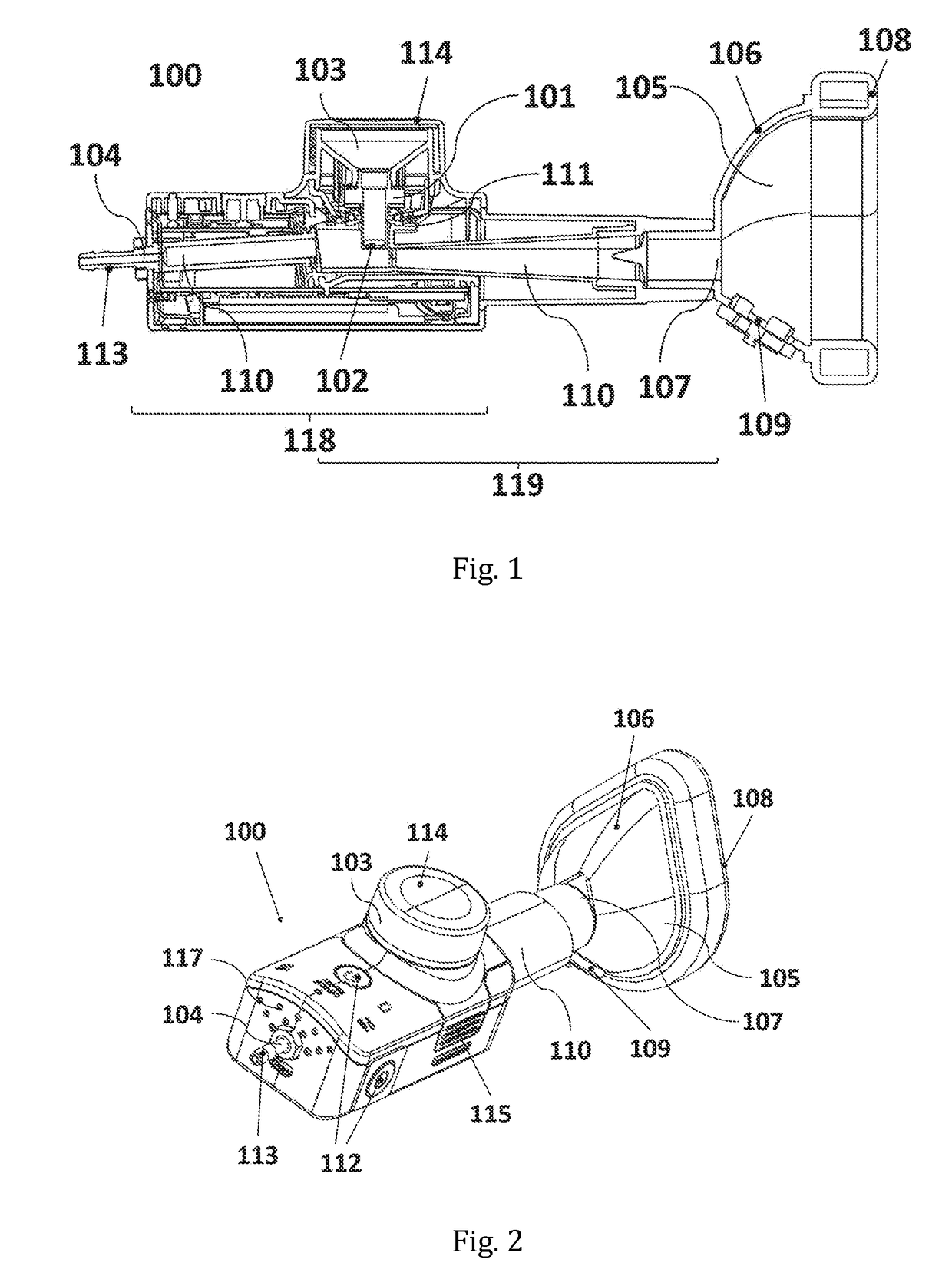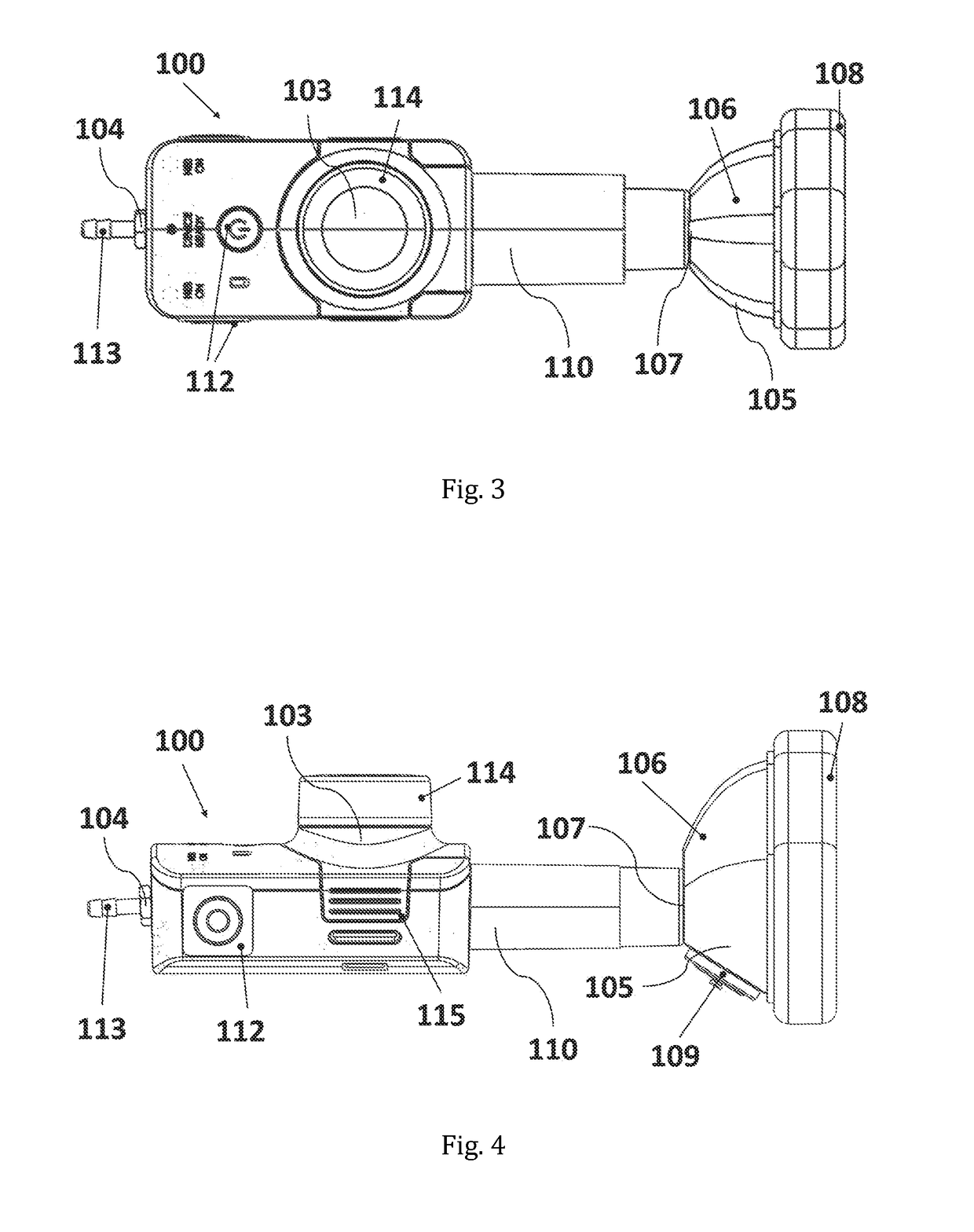Inhalation device for use in aerosol therapy of respiratory diseases
a technology of aerosol therapy and inhalation device, which is applied in the direction of drug composition, antibody medical ingredients, dispersed delivery, etc., can solve the problems of difficult to make an effective use of inhalation therapy, difficult to achieve effective drug delivery to the lungs, and groups that present particular challenges, and achieve high velocity
- Summary
- Abstract
- Description
- Claims
- Application Information
AI Technical Summary
Benefits of technology
Problems solved by technology
Method used
Image
Examples
example 1
Deposition Study for an Anti-RSV Nanobody Agent using the Inhalation System According to the Invention
[0181]SEQ ID NO: 71 (Table A-3) was used in an experiment evaluating the effect of simulated inhalation and aerosol administration, with and without air supply, on the inhaled drug amount.
[0182]The determination of the inhaled dose was performed with the Sophia Anatomical Infant Nose Throat (SAINT) model; an anatomically correct representation of the upper airways of a 9 month old child, which is built using stereolithographic techniques and used for studying aerosol deposition in young children (see e.g. Janssens et al.; J Aerosol Med. 2001 Winter;14(4):433-41.).
[0183]The experimental set-up is represented in FIG. 8; showing the inhalation device (100) with the reservoir (103), the gas inlet opening (104), the flow channel, or mixing channel, (110) and the face mask (105) with the one-way exhalation valve or two-way inhalation / exhalation valve (109). FIG. 8 further shows the patien...
PUM
| Property | Measurement | Unit |
|---|---|---|
| flow rate | aaaaa | aaaaa |
| flow rate | aaaaa | aaaaa |
| velocity | aaaaa | aaaaa |
Abstract
Description
Claims
Application Information
 Login to View More
Login to View More - R&D
- Intellectual Property
- Life Sciences
- Materials
- Tech Scout
- Unparalleled Data Quality
- Higher Quality Content
- 60% Fewer Hallucinations
Browse by: Latest US Patents, China's latest patents, Technical Efficacy Thesaurus, Application Domain, Technology Topic, Popular Technical Reports.
© 2025 PatSnap. All rights reserved.Legal|Privacy policy|Modern Slavery Act Transparency Statement|Sitemap|About US| Contact US: help@patsnap.com



